English
CONTENTS
FOREWORD
INTRODUCTION
1 Scope
2 Normative references
3 Terms and definitions
4 Requirements common to vehicle and component/module emissions measurement
4.1 General test requirements and test plan
4.2 Shielded enclosure
4.3 Absorber-lined shielded enclosure (ALSE)
4.4 Measuring instrument
4.5 Power supply
5 Measurement of emissions received by an antenna on the same vehicle
5.1 Antenna measuring system
5.2 Method of measurement
5.3 Examples of limits for vehicle radiated disturbances
6 Measurement of components and modules
6.1 Test equipment
6.2 Conducted emissions from components/modules – Voltage method
6.3 Conducted emissions from components/modules – current probe method
6.4 Radiated emissions from components/modules – ALSE method
6.5 Radiated emissions from components/modules – TEM cell method
6.6 Radiated emissions from components/modules – Stripline method
Annex A (informative) Flow chart for checking the applicability of CISPR 25
Annex B (normative) Antenna matching unit – Vehicle test
Annex C (informative) Sheath-current suppressor
Annex D (informative) Guidance for the determination of the noise floor of active vehicle antennas in the AM and FM range
Annex E (normative) Artificial network
Annex F (informative) TEM cell dimensions
Annex G (informative) Radiated emissions from components/modules – Stripline method
Annex H (informative) Interference to mobile radio communication in the presence of impulsive noise – Methods of judging degradation
Annex I (informative) Items under consideration
Bibliography
Figures
Figure 1 – Method of determination of conformance for all frequency bands
Figure 2 – Example of gain curve
Figure 3 – Vehicle-radiated emissions – Example for test layout (end view with monopole antenna)
Figure 4 – Average limit for radiated disturbances from vehicles GPS band 1 567,42 to 1 583,42 MHz
Figure 5 – Example for the required minimum attenuation of the signal / control line filters
Figure 6 – Conducted emissions – EUT with power return line remotely grounded.
Figure 7 – Conducted emissions – EUT with power return line locally grounded
Figure 8 – Conducted emissions – Test layout for alternators and generators
Figure 9 – Conducted emissions – Test layout for ignition system components
Figure 10 – Conducted emissions – Example of test layout for current probe measurements
Figure 11 – Test harness bending requirements
Figure 12 – Example of test set-up – rod antenna
Figure 13 – Example of test set-up – biconical antenna
Figure 14 – Example of test set-up – log-periodic antenna
Figure 15 – Example of test set-up – above 1 GHz
Figure 16 – Example of average limit for radiated disturbances from components GPS band 1 567,42 to 1 583,42 MHz – Class 5
Figure 17 – TEM cell
Figure 18 – Example of arrangement of leads in the TEM cell and to the connector panel
Figure 19 – Example of the arrangement of the connectors, the lead frame and the dielectric support
Figure 20 – Example of the TEM cell method test layout
Figure B.1 –Verification set-up
Figure C.1 – Attenuation vs. frequency
Figure D.1 – Vehicle test set up for equipment noise measurement in the AM/FM range
Figure D.2 – Vehicle test set up for antenna noise measurement in the AM/FM range
Figure E.1 – Characteristics of the AN impedance
Figure E.2 – Example of 5 μH AN schematic
Figure F.1 – TEM cell
Figure G.1 – Example of a basic stripline test setup in a shielded enclosure
Figure G.2 – Example for a 50 Ω stripline
Figure G.3 – Example for a 90 Ω stripline
Tables
Table 1 – Spectrum analyser parameters
Table 2 – Scanning receiver parameters
Table 3 – Antenna types
Table 4 – Example for limits of disturbance – Complete vehicle
Table 5 – Examples of quasi-peak or peak limits for conducted disturbances – Voltage method
Table 6 – Examples of average limits for conducted disturbances – Voltage method
Table 7 – Examples of quasi-peak and peak limits for conducted disturbances – Control/signal lines – Current probe method
Table 8 – Examples of average limits for conducted disturbances – Control/signal lines – Current probe method
Table 9 – Examples of quasi-peak or peak limits for radiated disturbances – ALSE
Table 10 – Examples of average limits for radiated disturbances – ALSE
Table 11 – Examples of quasi-peak or peak limits for radiated disturbances – TEM cell
Table 12 – Examples of average limits for radiated disturbances – TEM cell
Table F.1 – Dimensions for TEM cells
Table G.1 – Examples of quasi-peak or peak limits for radiated disturbances – Stripline
Table G.2 – Examples of average limits for radiated disturbances – Stripline
Français
SOMMAIRE
AVANT-PROPOS
INTRODUCTION
1 Domaine d’application
2 Références normatives
3 Termes et définitions
4 Exigences communes pour les mesures de perturbations sur les véhicules et sur les équipements/modules
4.1 Exigences générales d’essai et plan d'essai
4.2 Cage de Faraday
4.3 Cage de Faraday recouverte d'absorbants (chambre anéchoïque)
4.4 Instrument de mesure
4.5 Alimentation
5 Mesure des perturbations reçues par une antenne située sur le même véhicule
5.1 Système d'antenne de mesure
5.2 Méthode de mesure
5.3 Exemples de limites des perturbations rayonnées sur véhicules
6 Mesures sur équipements et modules
6.1 Matériel d'essai
6.2 Émissions conduites par les équipements/modules – Méthode en tension
6.3 Émissions conduites par les équipements/modules – méthode de la pince de courant
6.4 Émissions rayonnées des composants/modules – Méthode de la chambre anéchoïque
6.5 Émissions rayonnées des composants/modules – Méthode de la cellule TEM
6.6 Émissions rayonnées des composants/modules – Méthode de la ligne TEM à plaques
Annexe A (informative) Diagramme d'application de la CISPR 25
Annexe B (normative) Système d'adaptation d'antenne – Essai véhicule
Annexe C (informative) Suppresseur de courant de surface
Annexe D (informative) Indications pour la détermination du niveau de bruit des antennes de véhicules actives dans les bandes de fréquences MA et MF
Annexe E (normative) Réseau fictif
Annexe F (informative) Dimensions des cellules TEM
Annexe G (informative) Émissions rayonnées des composants/modules – Méthode de la ligne TEM à plaques
Annexe H (informative) Interférences nocives aux communications radio liées au bruit impulsif – Méthodes d'évaluation de la dégradation des communications
Annexe I (informative) Travaux à l’étude
Bibliographie
Figures
Figure 1 – Méthode pour déterminer la conformité de l’ensemble des bandes de fréquences
Figure 2 – Exemple de courbe de gain
Figure 3 – Émissions rayonnées sur véhicules – Exemple de schéma d'essai (vue de face avec une antenne de type monopole)
Figure 4 – Limite valeur moyenne sur véhicule, pour les perturbations rayonnées dans la bande GPS 1 567,42 à 1 583,42 MHz
Figure 5 – Exemple pour l'atténuation minimale requise d'un filtre de ligne signal / contrôle
Figure 6 – Émissions conduites – Appareil en essai avec ligne de retour d'alimentation raccordée au châssis à distance
Figure 7 – Émissions conduites – Appareil en essai avec ligne de retour d'alimentation raccordée au châssis localement
Figure 8 – Émissions conduites – Montage d'essai pour alternateurs et générateurs
Figure 9 – Émissions conduites – Montage d'essai pour les composants du système d'allumage
Figure 10 – Émissions conduites – Exemple de schéma d'essai pour les mesures avec pince de courant
Figure 11 – Exigences relatives à la déviation du faisceau d'essai
Figure 12 – Exemple de montage d'essai – antenne fouet
Figure 13 – Exemple de montage d'essai – antenne biconique
Figure 14 – Exemple de montage d'essai – antenne log-périodique
Figure 15 – Exemple de montage d'essai – fréquences supérieures à 1 GHz
Figure 16 – Exemple de limite valeur moyenne pour les émissions rayonnées des composants sur la bande GPS allant de 1 567,42 MHz à 1 583,42 MHz – Classe 5
Figure 17 – Cellule TEM
Figure 18 – Exemple de disposition des fils dans la cellule TEM et du raccordement au panneau de connecteurs
Figure 19 – Exemple de disposition des connecteurs, du circuit en nappe et du support diélectrique
Figure 20 – Exemple de schéma d'essai pour la méthode de la cellule TEM
Figure B.1 – Montage utilisé pour la vérification
Figure C.1 – Atténuation en fonction de la fréquence
Figure D.1 – Configuration du véhicule utilisée pour les essais de mesure du niveau de bruit des équipements dans les bandes de fréquences MA et MF
Figure D.2 – Configuration du véhicule utilisée pour les mesures du niveau de bruit de l’antenne dans les bandes de fréquences MA et MF
Figure E.1 – Caractéristiques d'impédance du réseau fictif
Figure E.2 – Exemple de schéma de réseau fictif 5 μH
Figure F.1 – Cellule TEM
Figure G.1 – Exemple de montage d'essai de base d'une ligne TEM à plaques dans une enceinte blindée
Figure G.2 – Exemple pour une ligne TEM à plaques d'impédance caractéristique de 50 Ω
Figure G.3 – Exemple pour une ligne TEM à plaques d'impédance caractéristique de 90 Ω
Tableaux
Tableau 1 – Paramètres de l’analyseur de spectre
Tableau 2 – Paramètres du récepteur à balayage
Tableau 3 – Types d'antennes
Tableau 4 – Exemples de limites de perturbations – Véhicule complet
Tableau 5 – Exemples de limites quasi-crête ou crête pour les perturbations conduites – Méthode en tension
Tableau 6 – Exemples de limites valeur moyenne (AVG) pour les perturbations conduites – Méthode en tension
Tableau 7 – Exemples de limites quasi-crête et crête pour les perturbations conduites – Fils de contrôle/signaux – Méthode de la pince de courant
Tableau 8 – Exemples de limites valeur moyenne (AVG) pour les perturbations conduites – Fils de contrôle/signaux – Méthode de la pince de courant
Tableau 9 – Exemples de limites quasi-crête ou crête pour les perturbations rayonnées – Méthode de la chambre anéchoïque
Tableau 10 – Exemples de limites valeur moyenne (AVG) pour les perturbations rayonnées – Méthode de la chambre anéchoïque
Tableau 11 – Exemples de limites quasi-crête ou crête pour les perturbations rayonnées – Méthode de la cellule TEM
Tableau 12 – Exemples de limites valeur moyenne (AVG) pour les perturbations rayonnées – Méthode de la cellule TEM
Tableau F.1 – Dimensions des cellules TEM
Tableau G.1 – Exemples de limites quasi-crête ou crête pour les perturbations rayonnées – Méthode de la ligne TEM à plaques
Tableau G.2 – Exemples de limites valeur moyenne (AVG) pour les perturbations rayonnées – Méthode de la ligne TEM à plaques
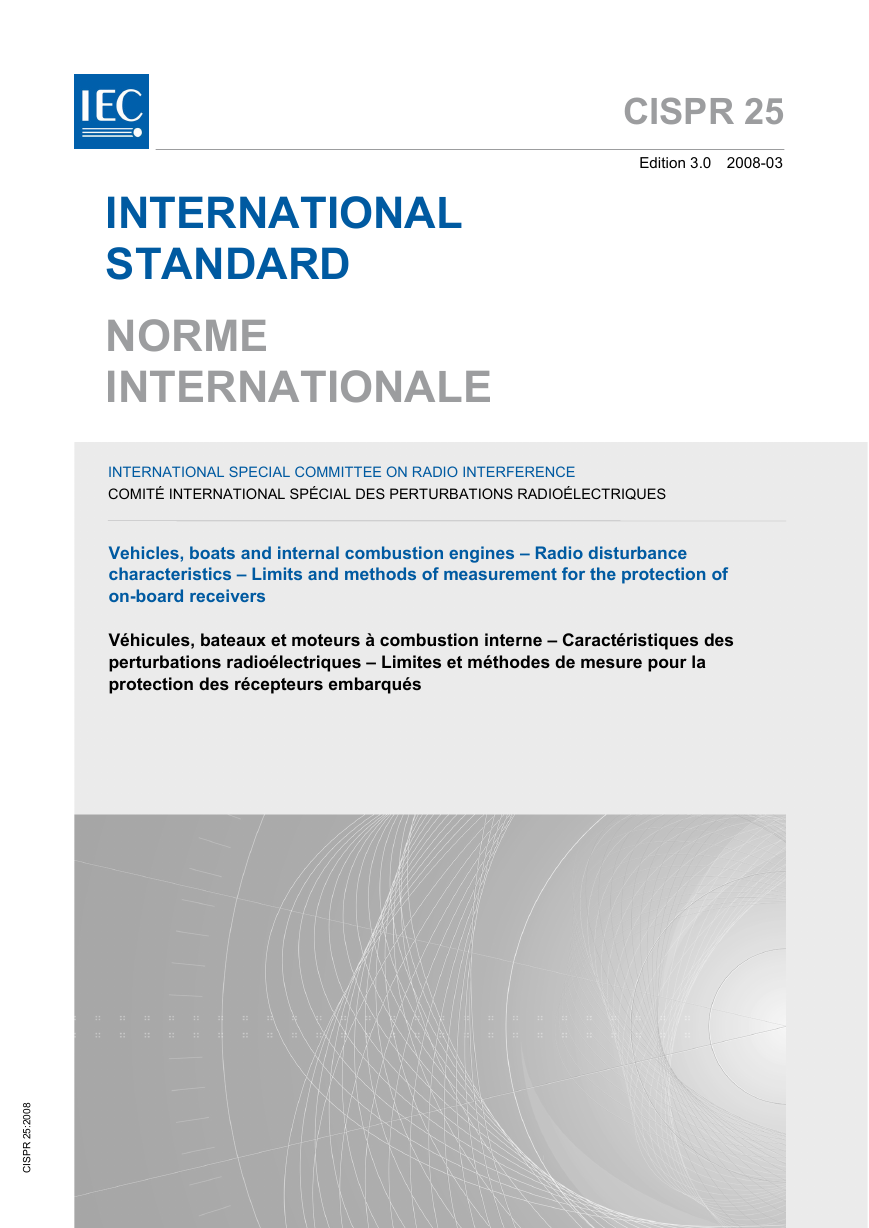
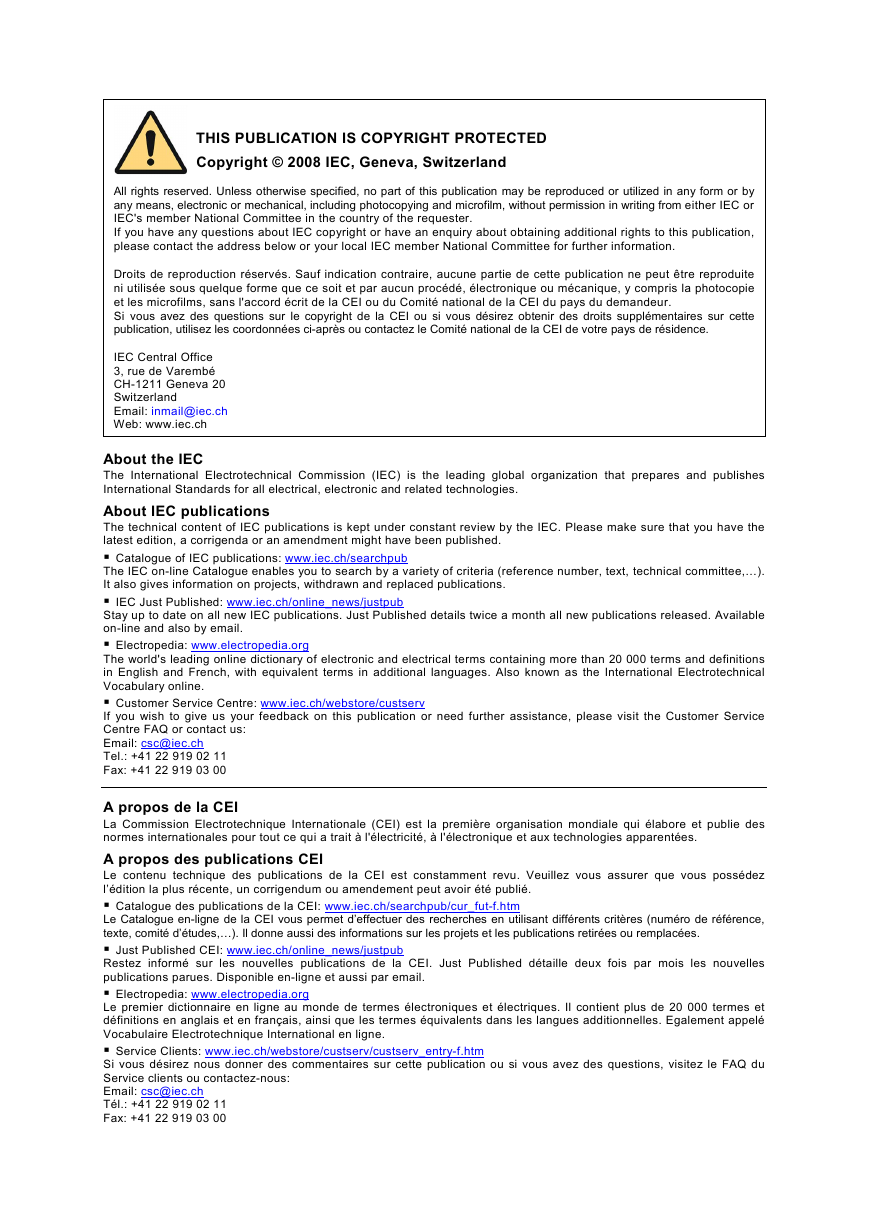
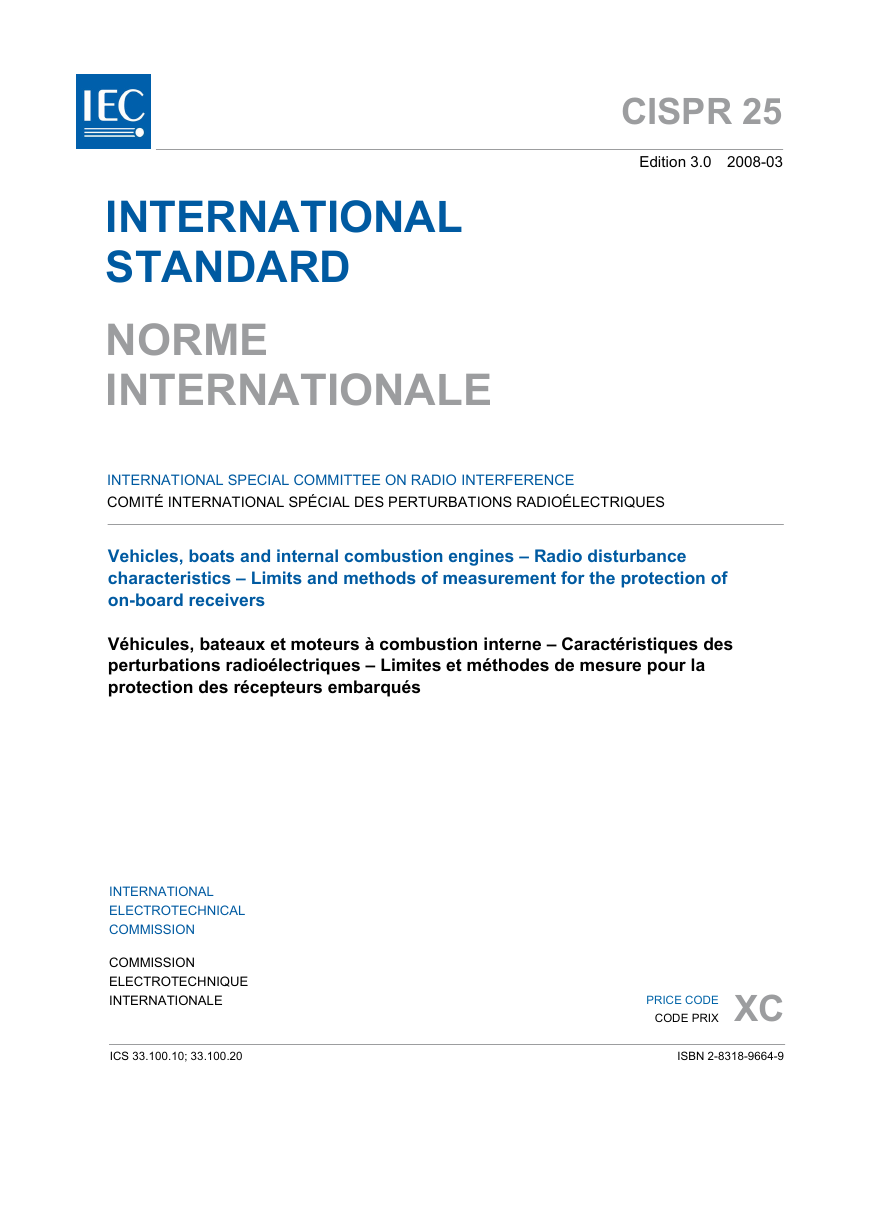
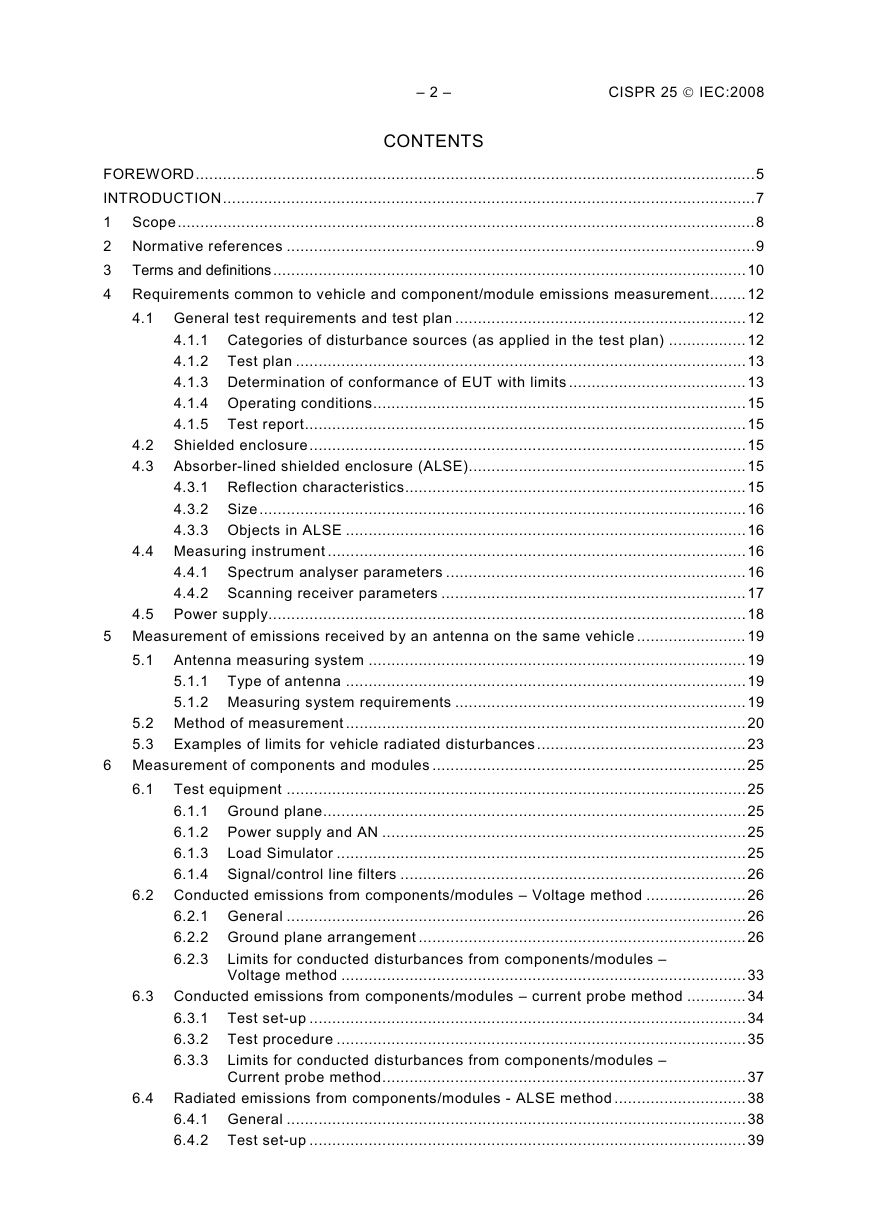
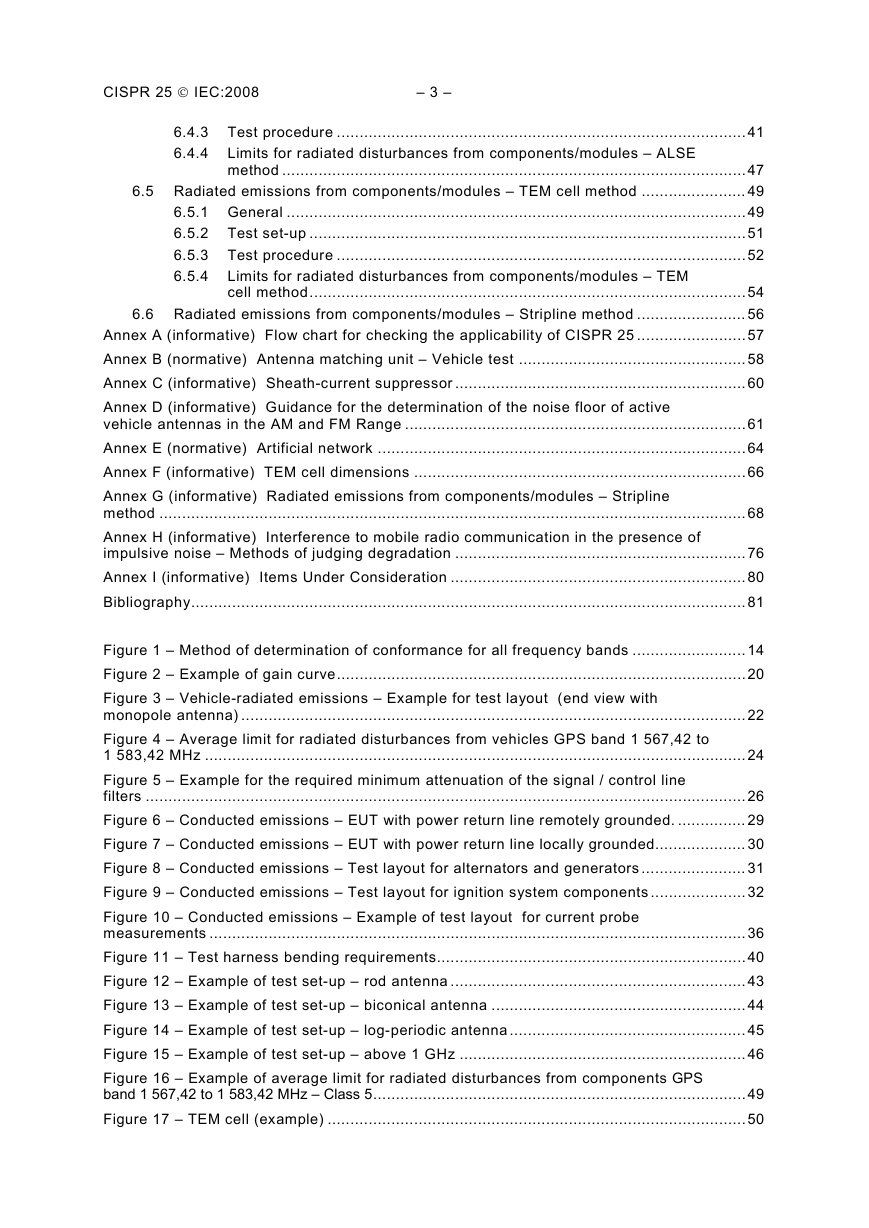


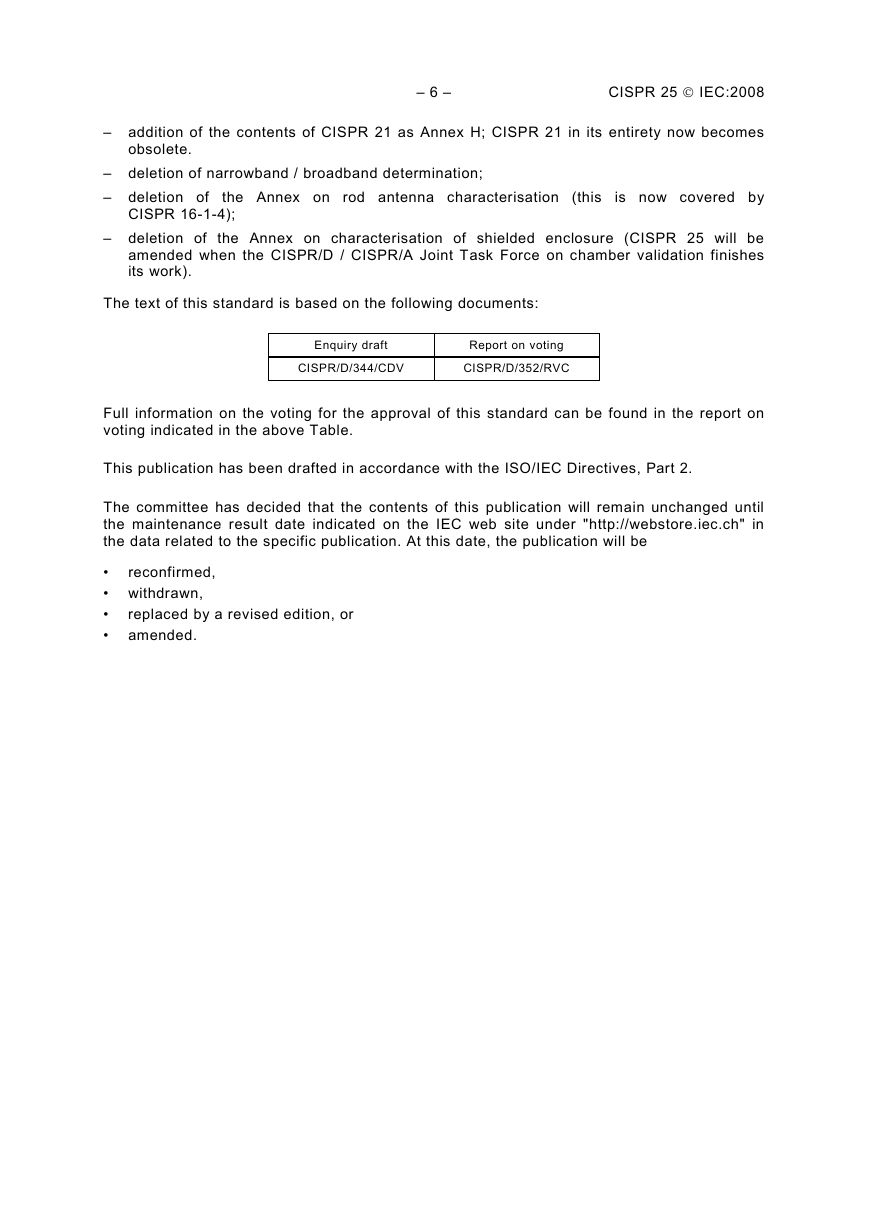








 2023年江西萍乡中考道德与法治真题及答案.doc
2023年江西萍乡中考道德与法治真题及答案.doc 2012年重庆南川中考生物真题及答案.doc
2012年重庆南川中考生物真题及答案.doc 2013年江西师范大学地理学综合及文艺理论基础考研真题.doc
2013年江西师范大学地理学综合及文艺理论基础考研真题.doc 2020年四川甘孜小升初语文真题及答案I卷.doc
2020年四川甘孜小升初语文真题及答案I卷.doc 2020年注册岩土工程师专业基础考试真题及答案.doc
2020年注册岩土工程师专业基础考试真题及答案.doc 2023-2024学年福建省厦门市九年级上学期数学月考试题及答案.doc
2023-2024学年福建省厦门市九年级上学期数学月考试题及答案.doc 2021-2022学年辽宁省沈阳市大东区九年级上学期语文期末试题及答案.doc
2021-2022学年辽宁省沈阳市大东区九年级上学期语文期末试题及答案.doc 2022-2023学年北京东城区初三第一学期物理期末试卷及答案.doc
2022-2023学年北京东城区初三第一学期物理期末试卷及答案.doc 2018上半年江西教师资格初中地理学科知识与教学能力真题及答案.doc
2018上半年江西教师资格初中地理学科知识与教学能力真题及答案.doc 2012年河北国家公务员申论考试真题及答案-省级.doc
2012年河北国家公务员申论考试真题及答案-省级.doc 2020-2021学年江苏省扬州市江都区邵樊片九年级上学期数学第一次质量检测试题及答案.doc
2020-2021学年江苏省扬州市江都区邵樊片九年级上学期数学第一次质量检测试题及答案.doc 2022下半年黑龙江教师资格证中学综合素质真题及答案.doc
2022下半年黑龙江教师资格证中学综合素质真题及答案.doc